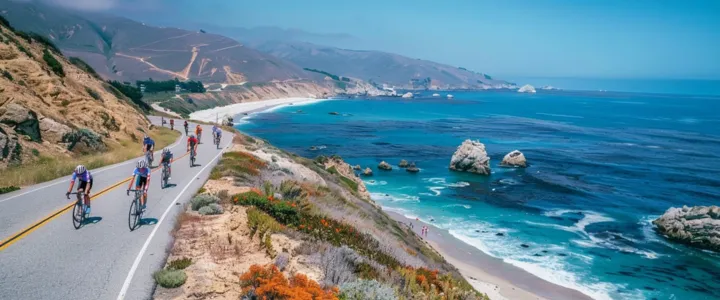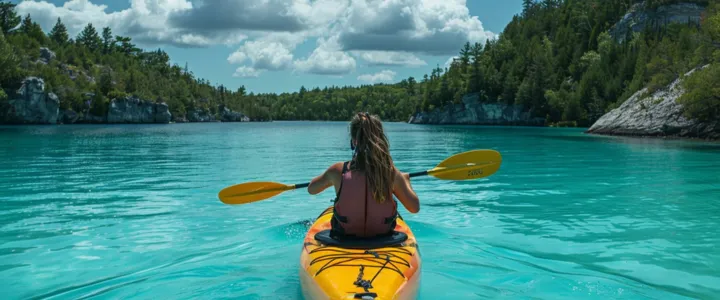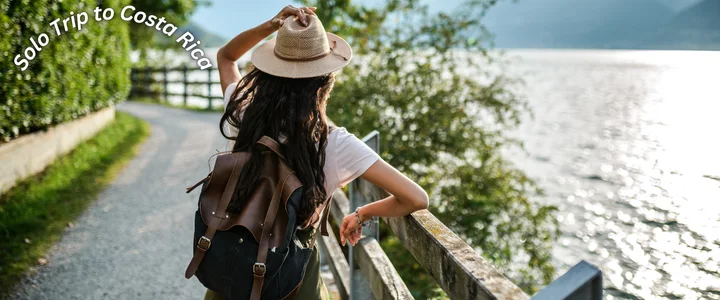Is It Safe To Travel To Costa Rica Alone
Solo Trip to Costa Rica: What an unforgettable adventure! I’m Cristine Rose, and after exploring Aruba’s stunning beaches and wandering through Belgium’s historic cities, I decided to take on Costa Rica alone, and it turned out to be one of the best decisions I’ve ever made. If you’re thinking about traveling solo, Costa Rica should be high on your list.
It offers a mix of breathtaking natural beauty, rich culture, and plenty of adventure that makes it perfect for solo travellers. Whether you’re hiking through misty cloud forests, relaxing on pristine beaches, or spotting exotic wildlife, Costa Rica has something for everyone. Plus, it’s known for being safe and welcoming, which is always a relief when you’re venturing out alone.

My trip started with the lush green landscapes of La Fortuna, where the mighty Arenal Volcano stands tall. From there, I moved on to the peaceful cloud forests of Monteverde, and later soaked up the sun in Manuel Antonio’s beautiful beaches. Each destination felt like a new chapter in my solo journey, filled with different adventures—from zip-lining through jungles to watching sloths laze in trees above me.
I’ve traveled solo before in Aruba, where I swam in turquoise waters, and in Belgium, where I ate my way through chocolate shops and visited fairy-tale castles, but Costa Rica’s raw nature and sense of freedom were on another level. It’s an experience that not only allows you to connect with the environment but also gives you the space to reconnect with yourself. So if you’re dreaming of a solo trip to Costa Rica, let me share some of my tips and insights to make it an amazing, unforgettable adventure!
Table of Contents
Why Choose Costa Rica for Your Solo Adventure?
The Appeal of Costa Rica for Solo Travellers
Costa Rica is known for its stunning natural beauty, welcoming locals, and rich biodiversity. From the Pacific coast to the Caribbean shores, this Central American country provides a wide range of experiences suited to both the thrill-seeker and the peace-lover. But why is Costa Rica so perfect for a solo adventure?
- Nature and Wildlife: With over 25% of its land designated as protected parks and reserves, Costa Rica is a paradise for nature lovers. Whether you’re interested in solo hiking in Costa Rica’s national parks or birdwatching in cloud forests, you’ll always be surrounded by diverse ecosystems.
- Safety: One of the biggest concerns for any solo traveller is safety. Thankfully, Costa Rica is considered one of the safest countries in Central America, with a strong reputation for political stability and a low crime rate compared to other nations in the region. While no place is without risk, Costa Rica is a relatively safe destination for solo travellers—especially when following some basic Costa Rica solo travel safety tips.
- Pura Vida Lifestyle: The concept of Pura Vida, which translates to “pure life,” is deeply ingrained in Costa Rican culture. It represents a relaxed, carefree approach to life. As a solo traveler, you’ll find this welcoming and positive attitude contagious, helping you to feel at ease throughout your trip.
Is Costa Rica Safe for Solo Travellers?
Safety is always a top priority for any solo trip, and safe solo travel in Costa Rica is entirely possible with a bit of planning and awareness. Here are a few key points to keep in mind:
- Low Crime Rate: Costa Rica enjoys one of the lowest crime rates in Latin America. However, like in any tourist-heavy destination, pickpocketing or petty theft can occur in busy areas. It’s best to avoid displaying valuables openly and stay cautious in crowded markets or bus stations.
- Safe Areas: Popular tourist destinations like San José, La Fortuna, Tamarindo, and Monteverde are generally safe, especially in well-trafficked areas. However, some neighborhoods in big cities like San José might be best avoided at night.
- Solo Travel Safety Tips:
- Stay in well-reviewed accommodations with positive ratings for safety.
- Use a money belt or anti-theft backpack to protect your valuables.
- Let someone know your travel itinerary, especially if you’re heading into remote areas.
- Download maps and learn basic Spanish phrases to help in emergencies.
Accessibility and Ease of Travel
Costa Rica’s compact size and developed infrastructure make it relatively easy to navigate. Whether you choose to rely on public transport or rent a car, you’ll find that the country is designed to cater to both locals and tourists. Costa Rica solo travel offers great accessibility to both popular tourist spots and off-the-beaten-path destinations.
- Public Transportation: Costa Rica has an extensive and affordable bus system connecting most major towns and cities. Solo travellers often prefer this mode of transport because it’s cost-effective and offers a chance to interact with locals.
- Domestic Flights: For those short on time or looking to visit more remote areas like the Osa Peninsula, domestic flights are available. Two major airlines, Sansa and Nature Air, operate frequent flights across the country.
Costa Rica’s combination of safety, natural beauty, and ease of travel make it one of the best destinations in Central America for solo travellers. Whether you’re a first-time solo traveler or an experienced adventurer, you’ll find Costa Rica to be a welcoming and exhilarating place to explore on your own.

Planning Your Solo Trip to Costa Rica
When Is the Best Time to Visit Costa Rica?
The best time for a solo trip to Costa Rica largely depends on the kind of experience you’re looking for. Costa Rica has two main seasons: the dry season and the rainy season, each offering a different kind of adventure.
Dry Season (December to April)
- Best time for beachgoers and outdoor activities: If you’re planning on soaking up the sun on Costa Rica’s beaches or hiking through its many national parks, the dry season is ideal. You’ll have clear skies and dry conditions, especially on the Pacific coast.
- Popular areas are busier: Keep in mind that with the good weather comes more tourists. Places like Tamarindo and Manuel Antonio can get crowded during this period, and prices for accommodations might be higher.
Rainy Season (May to November)
- Perfect for budget travellers and nature lovers: The rainy season, also called the “green season,” is when the country comes alive with lush, green landscapes. Though there are daily downpours, these usually happen in the afternoon and are short-lived.
- Fewer crowds, and lower prices: Traveling during this time means fewer tourists and more affordable accommodations, making it ideal for a more peaceful and affordable solo trip to Costa Rica.
- Best for eco-tourism: If you’re interested in activities like wildlife viewing, particularly for turtles, or visiting Costa Rica’s national parks, this season is ideal as animals are more active and the rainforests are at their most vibrant.
Impact of Seasons on Wildlife and Activities
- Turtle nesting season: The rainy season (specifically July to October) is the best time to witness sea turtles nesting in places like Tortuguero and the Osa Peninsula.
- Surfing: While Costa Rica’s beaches offer year-round surf, the rainy season can create more challenging swells, particularly on the Pacific coast. However, for beginners, spots like Tamarindo remain suitable throughout the year.
How to Get to Costa Rica
Flying into Costa Rica is relatively straightforward, with two main international airports:
- San José – Juan Santamaría International Airport (SJO): The largest and busiest airport, located near the capital, San José. It’s the gateway for those heading to central and southern parts of the country, including Arenal, Monteverde, and Manuel Antonio.
- Liberia – Daniel Oduber Quirós International Airport (LIR): Located in the northwest, this is a convenient option for those heading directly to the beaches of Guanacaste or popular surf towns like Tamarindo.
Entry Requirements
- Visa: Citizens of most countries (including the U.S., Canada, and EU nations) don’t need a visa for stays up to 90 days. Ensure your passport is valid for at least six months beyond your trip.
- Vaccination: No mandatory vaccinations are required for entry into Costa Rica, though it’s always good to check for any updates. If you’re traveling from a country with a risk of yellow fever, a vaccination certificate may be required.
- COVID-19 Restrictions: As of now, there are no strict COVID-19 entry requirements, but it’s always a good idea to check the latest updates before your departure.

Budgeting for a Solo Trip to Costa Rica
One of the most important factors when planning a solo trip is figuring out your budget. Costa Rica solo travel can be as luxurious or as affordable as you choose, but here’s a breakdown to help you estimate your costs.
| Category | Average Cost (per day) |
|---|---|
| Accommodation | $15–$25 (hostels) / $50–$100 (mid-range hotels) |
| Food | $5–$10 (local meals) / $15–$30 (restaurant meals) |
| Transportation | $5–$20 (buses) / $30–$50 (rental car per day) |
| Activities | $20–$75 (tours, excursions) |
Accommodation Costs
- Hostels: Costa Rica is well-known for its vibrant hostel culture, which is perfect for solo travellers looking to meet others. Prices range from $15 to $25 per night, and many hostels offer social activities like group hikes or beach clean-ups.
- Hotels and Eco-Lodges: If you prefer more privacy or comfort, Costa Rica has a wide range of mid-range hotels and eco-lodges, particularly in eco-tourism hot spots like Monteverde or La Fortuna. Prices range from $50 to $100 per night, depending on location and amenities.
Food and Dining
- Eating like a local: One of the best ways to save money is by dining at local eateries known as sodas. Meals here can cost as little as $5 to $10, and you’ll get to enjoy authentic Costa Rican dishes like gallo pinto (rice and beans) or casado (a traditional plate with rice, beans, meat, and salad).
- Restaurants: Mid-range restaurants are pricier but still affordable, with meals costing around $15 to $30.
Transportation Costs
- Buses: Costa Rica’s public bus system is reliable and incredibly cheap. You can expect to pay around $5 to $20 for long-distance routes.
- Car Rentals: If you’re interested in exploring remote locations, renting a car is a great option, though it can be pricier at around $30 to $50 per day, depending on the type of vehicle.
Activities and Tours
- Adventure activities: Costa Rica offers a range of experiences for solo travellers, from zip-lining through rainforests to guided wildlife tours. These can range from $20 for a simple tour to $75 or more for all-day excursions like white-water rafting or volcano hikes.
Money-Saving Tips for Solo Travellers
- Travel during the green season: As mentioned earlier, you’ll find lower prices on accommodations and activities during the rainy season.
- Use public transportation: Buses are a cost-effective way to travel between cities, and they provide a unique opportunity to interact with locals.
- Eat local: Avoid tourist traps and enjoy delicious local food at sodas to save money.
Best Destinations in Costa Rica for Solo Travellers
Costa Rica is packed with diverse destinations, making it a dream come true for solo travellers. From cloud forests to pristine beaches, here are some of the best places you should consider on your solo adventure.
1. La Fortuna and Arenal Volcano
La Fortuna is one of Costa Rica’s most popular destinations, especially for those seeking adventure and stunning natural scenery. Solo travellers will appreciate the variety of activities available, from hiking and exploring waterfalls to visiting natural hot springs.
- Top Attractions: Arenal Volcano National Park, La Fortuna Waterfall, Tabacón Hot Springs
- Why It’s Great for Solo Travellers: There are plenty of organized tours, so it’s easy to join a group and meet other travellers.
2. Monteverde Cloud Forest Reserve
Monteverde is ideal for nature lovers and those who enjoy cooler climates. The cloud forests are rich in biodiversity, and there are ample opportunities to explore on your own or with small guided tours.
- Top Attractions: Hanging bridges, zip-lining, birdwatching, guided night walks
- Why It’s Great for Solo Travellers: Monteverde’s hostels are known for their community feel, and it’s easy to meet fellow adventurers.
3. Manuel Antonio National Park
Manuel Antonio is a must-visit for solo travellers interested in wildlife and beaches. The national park is teeming with monkeys, sloths, and colorful birds, while the nearby beaches are perfect for relaxation.
- Top Attractions: Manuel Antonio Beach, Espadilla Beach, wildlife spotting
- Why It’s Great for Solo Travellers: The park is small and easy to explore on your own, with many guided tours available if you prefer company.
4. Puerto Viejo de Talamanca
On the Caribbean coast, Puerto Viejo offers a laid-back vibe with beautiful beaches, reggae music, and Afro-Caribbean culture. It’s the perfect spot to relax after more physically demanding adventures.
- Top Attractions: Cahuita National Park, Salsa Brava Beach, Jaguar Rescue Center
- Why It’s Great for Solo Travellers: Puerto Viejo has a large backpacker community, and many hostels here offer communal spaces to meet people.
5. Tamarindo
If you’re looking for a mix of beach life, nightlife, and surfing, Tamarindo is the place to go. The town is one of the most popular surfing spots in Costa Rica, and it has plenty of cafes, bars, and restaurants.
- Top Attractions: Surfing, estuary tours, Las Baulas National Marine Park
- Why It’s Great for Solo Travellers: With surf schools and group tours available, Tamarindo is perfect for solo travellers looking to pick up a new skill while socializing.

Costa Rica Travel Tips for Solo Travellers
Traveling solo can be incredibly rewarding, but there are a few things to keep in mind to ensure your trip goes smoothly. Here are some essential travel tips for solo travellers in Costa Rica.
1. Safety First
Costa Rica is generally safe for solo travellers, but as with any country, it’s important to remain cautious.
- Stick to Well-Traveled Areas: While the majority of tourist spots are very safe, some remote regions can be risky, especially at night.
- Use Reputable Transportation: Always use official taxis (red with yellow triangles) or ride-sharing apps like Uber.
- Avoid Flashing Valuables: Keep your belongings secure and avoid showing off expensive items, especially in cities or busy tourist areas.
2. Learn Basic Spanish Phrases
While many people in Costa Rica, especially in tourist areas, speak English, knowing some basic Spanish will help you navigate better and connect with locals. Try to learn phrases like:
- “¿Cuánto cuesta?” (How much does this cost?)
- “¿Dónde está…?” (Where is…?)
- “Gracias” (Thank you)
3. Stay in Social Accommodations
Hostels and eco-lodges are fantastic options for solo travellers. They often organize group tours and activities, providing great opportunities to meet others.
- Popular Hostel Chains: Selina, Arenal Hostel Resort, and Pura Vida Mini Hostel.
- Pro Tip: Choose hostels with communal areas or organized events to meet other solo travellers.
4. Pack Smart for the Weather
Costa Rica has a tropical climate, but temperatures and conditions can vary dramatically depending on the region. If you’re traveling between the coast and the mountains, pack accordingly.
- For the Beach: Lightweight clothing, sunscreen, and sandals.
- For the Rainforest: Rain jacket, sturdy shoes, and insect repellent.
5. Be Mindful of Wildlife
Costa Rica is known for its rich biodiversity. When exploring, respect the natural environment.
- Don’t Feed Wildlife: It can harm their health and disrupt their natural behavior.
- Stick to Trails: Keep to marked trails to protect both yourself and the environment.
Costa Rica Solo Travel Safety Tips
While Costa Rica is one of the safest countries in Central America, it’s still essential to prioritize your safety, especially when traveling solo. Here are some additional safety tips:
1. Use Official Tour Guides
When exploring national parks or going on adventures like zip-lining or waterfall rappelling, it’s important to use licensed, reputable tour operators. They know the terrain well and can help in case of an emergency.
2. Keep a Copy of Important Documents
Make copies of your passport, ID, and travel insurance details, and store them separately from the originals. It’s also a good idea to have digital backups in case your documents are lost or stolen.
3. Stay Aware of Your Surroundings
Particularly in crowded areas like bus stations or markets, petty theft can occur. Stay vigilant, avoid distractions like using your phone while walking, and keep your bags close.
Why Costa Rica Is Great for Solo Travellers
Costa Rica’s combination of natural beauty, adventure activities, and welcoming locals makes it one of the best destinations for solo travellers. Here’s why:
1. Friendly Locals
Costa Ricans, or “Ticos,” are known for their warmth and friendliness. Solo travellers often find that locals are eager to help, whether giving directions or sharing tips on the best places to visit.
2. Adventure Opportunities
Whether you’re into hiking, surfing, or wildlife watching, Costa Rica offers endless options for adventure. Solo travellers can join guided tours, which provide a chance to meet people while exploring.
3. Safety and Stability
Compared to other Central American countries, Costa Rica enjoys political stability and a strong focus on environmental conservation. It’s a relatively safe destination for solo travellers, including solo female travellers.
Best Activities for Solo Travellers in Costa Rica
Costa Rica offers plenty of exciting activities that cater to solo travellers. Whether you’re looking for adrenaline-pumping experiences or more tranquil pursuits, here are some of the best options:
1. Surfing
Costa Rica is a world-class surfing destination, with breaks suitable for all levels. Towns like Tamarindo, Jaco, and Santa Teresa are great for solo travellers looking to learn or improve their skills.
2. Hiking and Nature Walks
There are endless hiking opportunities in Costa Rica’s national parks and reserves. Solo travellers can explore trails in Corcovado National Park, Monteverde Cloud Forest, and Rincón de la Vieja on their own or join group hikes.
3. Wildlife Watching
Costa Rica is a paradise for wildlife enthusiasts. Solo travellers can take guided wildlife tours in places like Manuel Antonio, Tortuguero, and Cahuita to see monkeys, sloths, and even nesting sea turtles.
4. Yoga and Wellness Retreats
Costa Rica is home to many yoga and wellness retreats, especially in places like Nosara and Santa Teresa. Solo travellers can unwind, recharge, and meet like-minded people in these peaceful settings.
FAQs
Is Costa Rica good for solo traveling?
Yes, Costa Rica is excellent for solo traveling. It’s known for being one of the safest and most welcoming countries in Central America, with a well-developed tourism infrastructure. Whether you’re seeking adventure in the rainforests, relaxation on the beaches, or cultural experiences in local towns, you’ll find plenty of options that cater to solo travellers. Costa Rica’s friendly locals (known as “Ticos”) and other solo travellers you’ll meet along the way also make it easy to feel comfortable and safe while exploring on your own.
How much does a solo trip to Costa Rica cost?
The cost of a solo trip to Costa Rica can vary depending on your travel style, but on average, budget travellers can expect to spend between $50-$100 per day. This includes accommodation in hostels or budget hotels, local transportation, meals at affordable restaurants, and activities like national park entrance fees. For mid-range travellers, the daily cost can rise to around $100-$200, which includes nicer hotels, organized tours, and eating at more upscale restaurants. If you’re into luxury travel, you could easily spend over $250 a day.
Can you visit Costa Rica on your own?
Absolutely! Costa Rica is a great destination to visit on your own. The country has a solid infrastructure for solo travellers, with plenty of tour operators offering group activities, making it easy to join in on adventures without feeling alone. Public transport and shuttle services are widely available, and many areas are easy to navigate solo. You’ll also find that Costa Rica has a thriving backpacker and eco-tourism community, making it simple to meet others along the way.
Is Costa Rica good for single guys?
Yes, Costa Rica is great for single guys. The country offers a wide range of activities, from surfing and zip-lining to exploring the vibrant nightlife in cities like San José and beach towns such as Tamarindo. Costa Rica’s diverse landscapes provide endless opportunities for adventure, and the laid-back vibe makes it easy to meet fellow travellers. Whether you’re looking for an action-packed trip or simply want to relax and unwind, Costa Rica has something for every type of solo male traveller.
Is Costa Rica expensive?
Costa Rica can be considered slightly more expensive than some of its Central American neighbors, but it offers great value for what you get. Costs can add up in popular tourist destinations, especially when it comes to accommodations and organized tours. However, there are ways to travel to Costa Rica on a budget, such as staying in hostels, eating local sodas (small restaurants), and using public transportation. If you plan ahead, Costa Rica can be an affordable destination for solo travellers.
Is Costa Rica friendly to foreigners?
Yes, Costa Rica is very friendly to foreigners. The locals, known as “Ticos,” are generally warm, helpful, and welcoming to tourists. English is commonly spoken in tourist areas, which makes it easier for non-Spanish speakers to navigate the country. Costa Rica also has a well-established tourism industry, so foreign travellers are common, and the country has a strong culture of hospitality toward visitors.
How many days in Costa Rica is enough?
To experience Costa Rica’s diverse landscapes and activities, 10 to 14 days is an ideal amount of time. This allows you to explore different regions, such as the beaches, rainforests, and volcanoes, without feeling rushed. However, if you’re short on time, even a 5 to 7-day trip can give you a good taste of Costa Rica’s beauty and adventure, especially if you focus on one or two main destinations, like La Fortuna or Manuel Antonio.
What to skip in Costa Rica?
While Costa Rica is full of amazing places to visit, there are a few spots that might not be worth prioritizing, especially if you’re short on time. Skip San José if you’re looking for natural beauty; the capital city doesn’t offer as many attractions as other parts of the country. Additionally, some popular beaches, like Jaco, can be overcrowded and over-commercialized. Instead, head to less touristy spots like Nosara or Puerto Viejo for a more authentic experience.
Is Costa Rica friendly to tourists?
Yes, Costa Rica is extremely friendly to tourists. Tourism is a major part of the country’s economy, and the locals are accustomed to welcoming visitors from all over the world. The country has a well-organized tourism infrastructure, with plenty of tour guides, eco-lodges, and hostels that cater to tourists. Whether you’re seeking adventure, relaxation, or a mix of both, you’ll find Costa Rica to be a welcoming and tourist-friendly destination.

